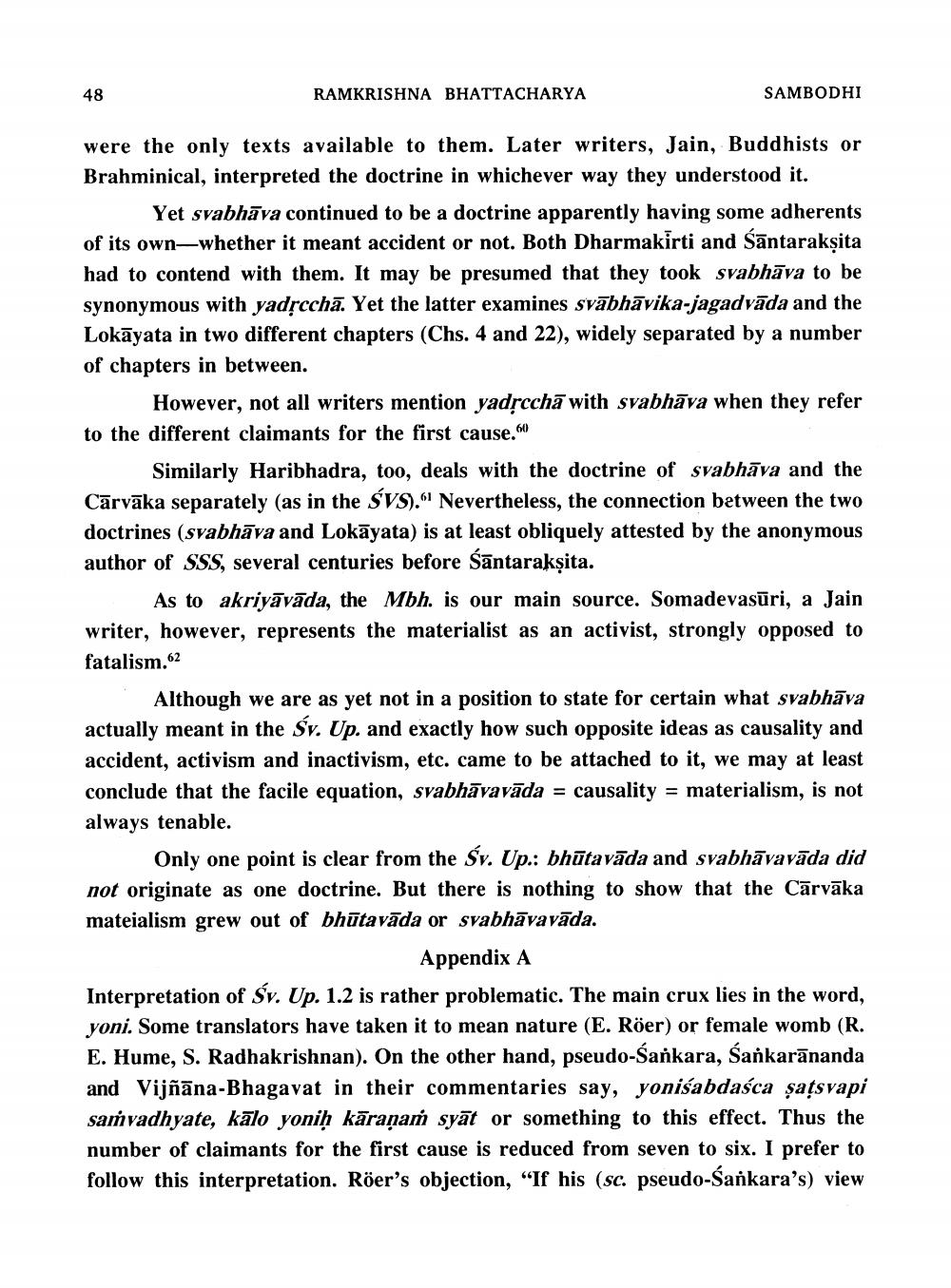________________
48
RAMKRISHNA BHATTACHARYA
SAMBODHI
were the only texts available to them. Later writers, Jain, Buddhists or Brahminical, interpreted the doctrine in whichever way they understood it.
Yet svabhāva continued to be a doctrine apparently having some adherents of its own—whether it meant accident or not. Both Dharmakirti and sāntarakṣita had to contend with them. It may be presumed that they took svabhāva to be synonymous with yadrochā. Yet the latter examines svābhāvika-jagadvāda and the Lokāyata in two different chapters (Chs. 4 and 22), widely separated by a number of chapters in between.
However, not all writers mention vadrcchā with svabhāva when they refer to the different claimants for the first cause.60
Similarly Haribhadra, too, deals with the doctrine of svabhāva and the Cārvāka separately (as in the SVS). Nevertheless, the connection between the two doctrines (svabhāva and Lokāyata) is at least obliquely attested by the anonymous author of SSS, several centuries before sāntarakṣita.
As to akriyāvāda, the Mbh. is our main source. Somadevasūri, a Jain writer, however, represents the materialist as an activist, strongly opposed to fatalism.62
Although we are as yet not in a position to state for certain what svabhāva actually meant in the Sv. Up. and exactly how such opposite ideas as causality and accident, activism and inactivism, etc. came to be attached to it, we may at least conclude that the facile equation, svabhāvavāda = causality = materialism, is not always tenable.
Only one point is clear from the Šv. Up.: bhūtavāda and svabhāvavāda did not originate as one doctrine. But there is nothing to show that the Cārvā mateialism grew out of bhūtavāda or svabhāvavāda.
Appendix A Interpretation of Sv. Up. 1.2 is rather problematic. The main crux lies in the word, yoni. Some translators have taken it to mean nature (E. Röer) or female womb (R. E. Hume, S. Radhakrishnan). On the other hand, pseudo-Sankara, Sankarānanda and Vijñāna-Bhagavat in their commentaries say, yoniśabdasca șațsvapi saṁvadhyate, kālo yoniḥ kāraņas syāt or something to this effect. Thus the number of claimants for the first cause is reduced from seven to six. I prefer to follow this interpretation. Röer's objection, “If his (sc. pseudo-Sankara's) view




